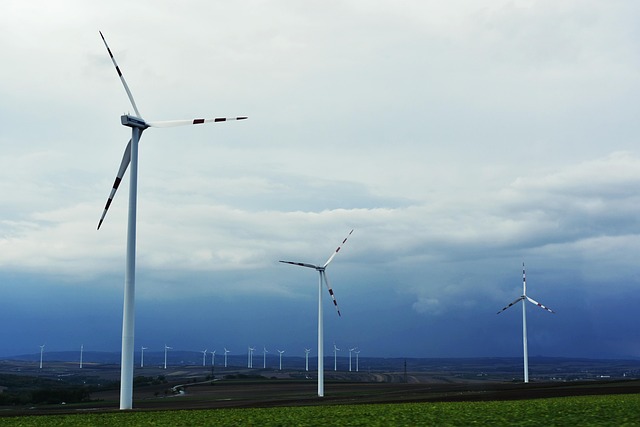Winds of Change: How Wind Power is Shaping Our Planet
The quest for sustainable energy solutions has become a focal point in today’s global dialogue on climate change, environmental sustainability, and economic stability. Among the myriad of renewable energy sources, wind power stands out as a pivotal player in the journey toward a low-carbon future. This article explores the evolution, technology, and impact of wind power, illustrating how the invisible currents of air are transforming our planet for the better.
The Rise of Wind Power
The utilization of wind as a source of energy dates back thousands of years, with ancient civilizations harnessing wind power for sailing and grain milling. However, the contemporary transformation of wind energy into a mainstream source of electricity began in the late 20th century. With the 1970s oil crisis highlighting the vulnerabilities of fossil fuel dependence, wind energy emerged as an attractive alternative.
Today, wind power has grown from niche beginnings to becoming one of the fastest-growing renewable energy sources globally. According to the Global Wind Energy Council, total installed wind capacity reached approximately 740 gigawatts by the end of 2022, with projections of continued growth. This rapid expansion reflects a broader recognition of wind energy’s potential to reduce greenhouse gas emissions and contribute to energy independence.
How Wind Power Works
At its core, wind power converts the kinetic energy of moving air into mechanical power, which can then be transformed into electricity. This process takes place primarily through wind turbines, robust structures designed to capture wind energy efficiently.
Wind turbines consist of several key components:
- Rotor Blades: These are aerodynamic blades that capture wind energy and rotate around a hub.
- Gearbox: The rotation from the blades is transferred to a gearbox, where the speed of rotation is increased to generate electricity effectively.
- Generator: This component converts mechanical energy from the gearbox into electrical energy.
- Tower: Towers elevate turbines to capture more wind, improving efficiency.
Wind farms, which encompass multiple turbines, are built on land or offshore, capitalizing on areas with high wind potential. Onshore farms are typically located in wide-open spaces such as plains or hills, while offshore farms benefit from stronger and more consistent winds found over oceans.
Environmental Impacts and Benefits
The adoption of wind power carries significant environmental advantages compared to traditional fossil fuels. Unlike coal or natural gas plants, wind turbines generate electricity without producing harmful emissions or pollutants that contribute to air quality degradation and climate change.
Wind energy offers a variety of ecological benefits, including:
- Reduction in Greenhouse Gas Emissions: Wind power significantly decreases reliance on carbon-intensive fossil fuels, subsequently reducing carbon dioxide emissions and mitigating climate change impacts.
- Minimal Water Usage: Traditional energy sectors often require substantial amounts of water for cooling and processing. Wind energy, conversely, uses virtually no water during its operations, conserving this precious resource.
- Habitat Preservation: Properly planned wind farms can coexist with agricultural activities and wildlife, enabling the dual use of land while preserving natural ecosystems.
However, wind energy is not without its challenges. Issues such as bird and bat mortality, noise pollution, and impacts on local landscapes are often areas of concern. Ongoing research and development aim to mitigate these challenges, improving turbine design and placement to ensure a more harmonious coexistence with nature.
Economic Implications of Wind Energy
Wind power not only benefits the environment but also stimulates economic growth. The sector has emerged as a multi-billion dollar industry, employing hundreds of thousands of individuals worldwide. Jobs in manufacturing, installation, maintenance, and operation of wind turbines are on the rise, fostering local economies.
Moreover, wind energy contributes to energy independence by reducing reliance on imported fuels. Countries investing in wind power can bolster their energy security, stabilize prices, and position themselves as leaders in the global renewable energy market.
Governments worldwide are recognizing the potential of wind energy and have implemented various initiatives to promote its growth. These may include tax incentives, subsidies, and renewable energy portfolio standards that encourage the development of wind power infrastructure. As technology advances and costs decline, wind energy is expected to become increasingly competitive with traditional forms of electricity generation.
Technological Advancements and Future Outlook
The future of wind energy looks promising, propelled by ongoing advancements in technology. Innovations in turbine design have resulted in larger, more efficient models capable of harnessing wind energy even at lower wind speeds. Developments in digital technology and data analytics are also enhancing turbine performance and predictive maintenance, leading to increased operational efficiency.
Offshore wind farms are emerging as a frontier in renewable energy development. With the ability to capture stronger and more consistent winds, offshore installations can generate significant amounts of electricity. Countries like Denmark, Germany, and China are at the forefront of this technology, demonstrating the potential scale and impact of offshore wind energy.
Emerging technologies such as floating wind turbines, which allow for placement in deeper waters, are expected to further expand the horizons of wind energy. These innovations could tap into vast, previously inaccessible wind resources, revolutionizing the industry and enhancing energy generation capacities.
Conclusion
As we confront the pressing challenges of climate change, energy security, and economic sustainability, wind power offers a beacon of hope. The winds of change are indeed sweeping across the globe, reshaping our energy landscape and heralding a new era of environmental consciousness. Harnessing the power of the wind is not just about generating electricity; it embodies the promise of a cleaner, more sustainable future for generations to come.
Through continued investment, innovation, and public support, wind energy will play an integral role in the global transition towards a renewable energy future. As we recognize the importance of harnessing nature’s potential, the collective journey toward a more sustainable planet makes every breeze ripple with possibility.
